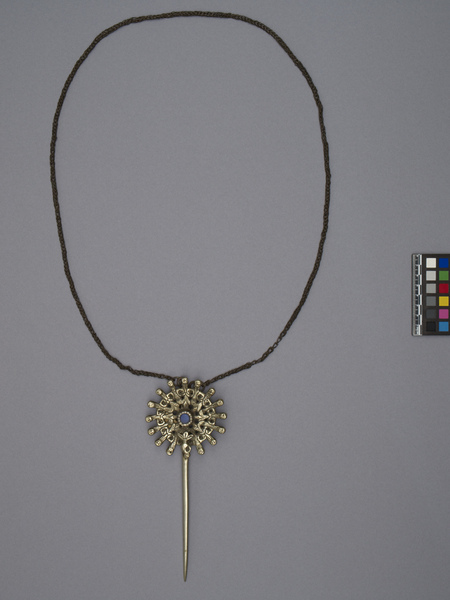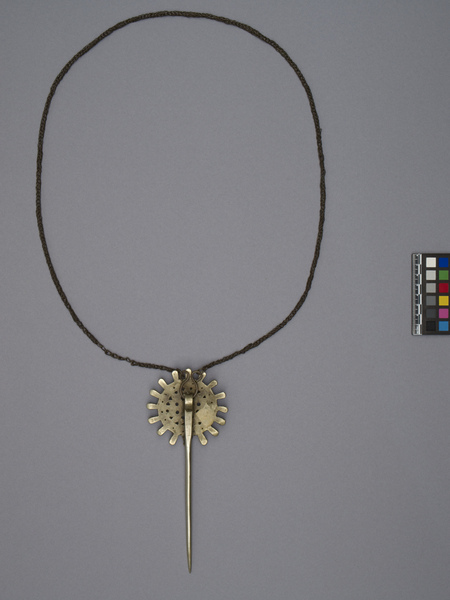Pin Item Number: 2813/61 from the MOA: University of British Columbia


Description
Silver-coloured straight and cylindrical pin with a circular finial created with sixteen ray-like protrusions. The front of the finial contains a piece of cylindrical blue glass(?) that has been set in the centre. Each ray-like protrusion has an incised face composed of eyebrows, eyes, and a mouth. Elongated, abstracted bodies continue down from each face to connect with the blue glass in the middle. Small holes within the metal of the finial (in the shapes of circles, triangles, and larger circles) work to define the bodies of the small figures. The top of the pin, where the shaft meets the finial, contains a raised and incised representation of a plant or fruit. At the back of the finial, the top of the pin shaft has been flattened and shaped into a loop. Through this loop, a think metal wire has been attached and it has been formed into two loops. A long, tarnished metal chain has been attached to these loops on the back of the pin.
History Of Use
A tupu is a pin that was used by women in several Central and South American countries to secure wrapped dresses and shawls. They were often considered family heirlooms and passed down from mother to daughter. Tupus were worn with traditional wool clothing, but they are not normally used with clothing made from synthetic materials. Chains are occasionally attached to this type of tupu in case the pin slips out. Chains are often worn around the neck.
Narrative
A woman is pictured wearing this tupu in her shawl in "Costume and Identity in Highland Ecuador" by A.P. Rowe (1998), on page 270.
Item History
- Made in Saraguro, Loja, Ecuador
- Owned by Blanca Muratorio and Ricardo Muratorio before August 19, 2010
- Received from Blanca Muratorio (Donor) and Ricardo Muratorio (Donor) on August 19, 2010
What
Who
- Culture
- Quechua
- Previous Owner
- Blanca Muratorio and Ricardo Muratorio
- Received from
- Blanca Muratorio (Donor) and Ricardo Muratorio (Donor)
Where
- Holding Institution
- MOA: University of British Columbia
- Made in
- Saraguro, Loja, Ecuador
When
- Ownership Date
- before August 19, 2010
- Acquisition Date
- on August 19, 2010
Other
- Item Classes
- metalwork
- Condition
- good
- Accession Number
- 2813/0061